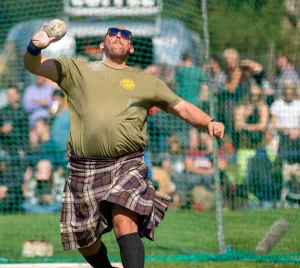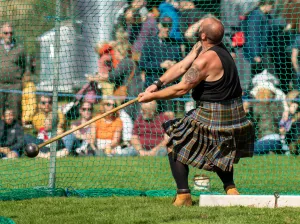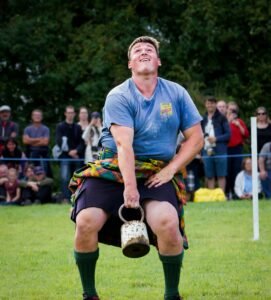Heavyweights
Home | Whats On | Competitions | Heavyweights
Heavyweights
Heavyweights is one of the most renowned parts of the Highland Games. Weight and Strength testing have been a part of Highland Games since their formative years and have remained a vital part of the Games today.
Stirling’s competition hosts 8 athletes annually to compete for The Specsavers Cup.
WHO IS COMPETING
HEAVYWEIGHT EVENTS
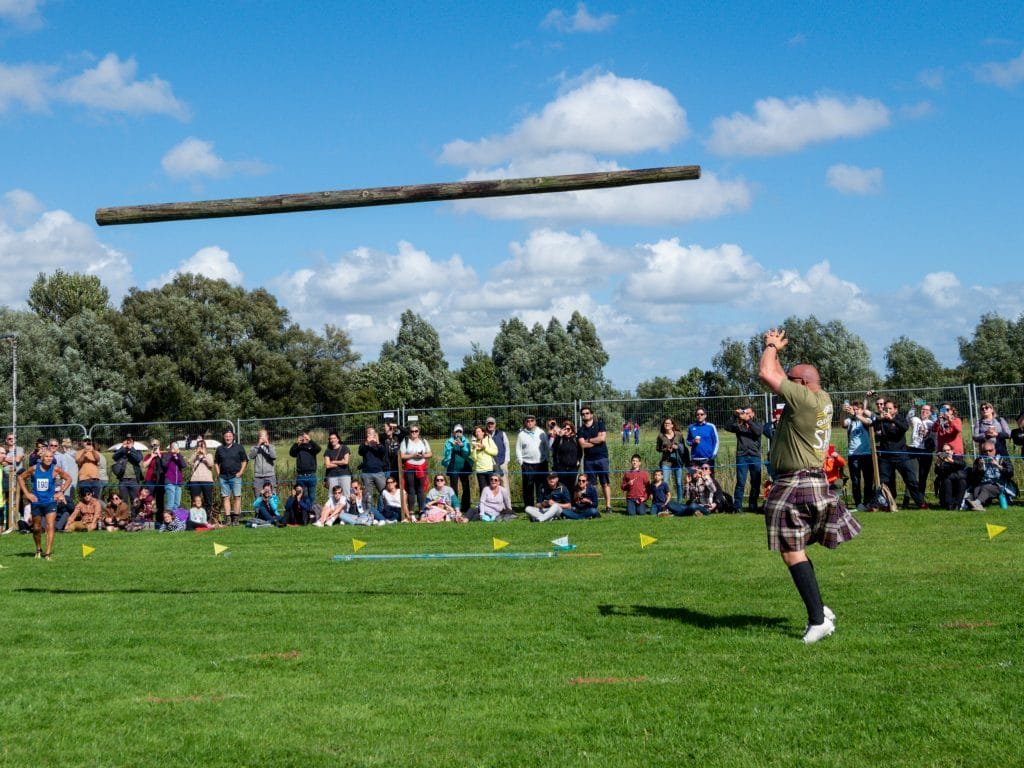
Tossing the Caber
This event has changed little since its inception.
Cabers are tapered and can vary in length and weight but usually around 150lbs and up to 17 feet.
The object of tossing the caber is to throw the pole directly ahead, landing on the heavy end so that the light end makes a perfect turn over and lands pointing directly in line, away from the thrower.
Points are then awarded on how straight the caber falls with any deviation attracting penalty points.

Throwing the Hammer
Since a Blacksmith’s forge was to be found in almost every glen, it is not surprising that another Highland pastime was Throwing the Hammer.
These days throwing style is strictly controlled.
No turning is allowed and the thrower grasps the handle and swings the hammer three or four times round his head before releasing it behind him.
Whilst the spectators are quite safe, the occasional straying hammer can be a hazard for Judges and wandering Games officials.
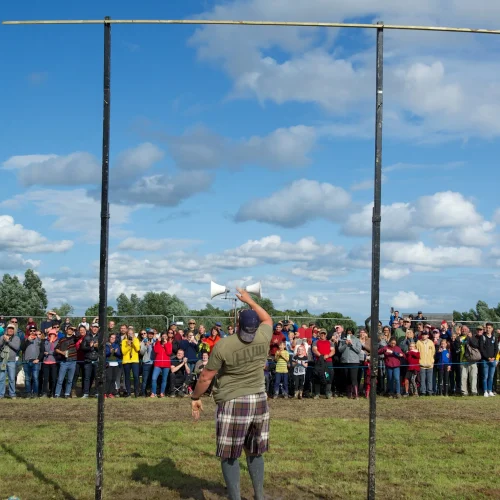
Weight over the Bar
The origins of throwing the 56lb weight over the bar event will be fairly clear.
In early games, large stones were thrown over a pole or rope and the height increased until a winner remained.
These days agricultural weights are used.
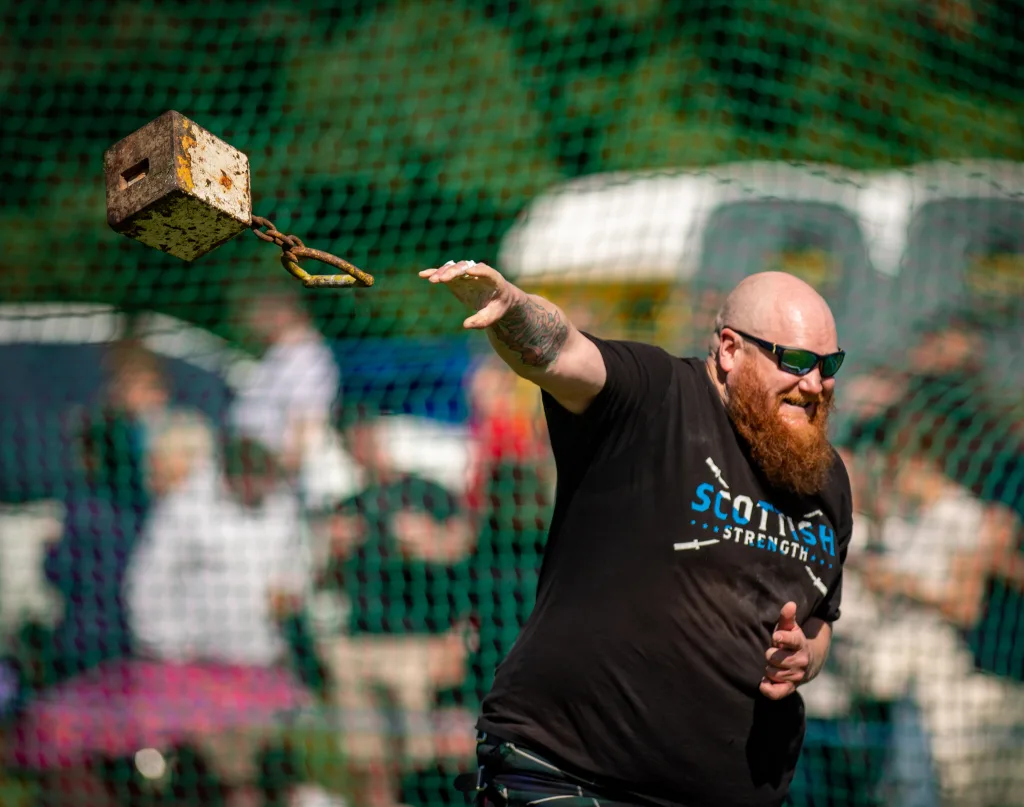
Throwing the Weight for Distance
Throwing the weight for Distance is done with a weight and chain, no more than 18″ long with a handle attached.
The thrower must use only one hand and has 9 feet behind the marker to make 3 full turns before releasing the handle and hurling the weight forward.
Competitors are disqualified if they unbalance themselves when throwing and step or fall over the trig.
When properly executed, it is probably the most graceful of the heavyweight events but it has its risks hence “cage” to protect the spectators.
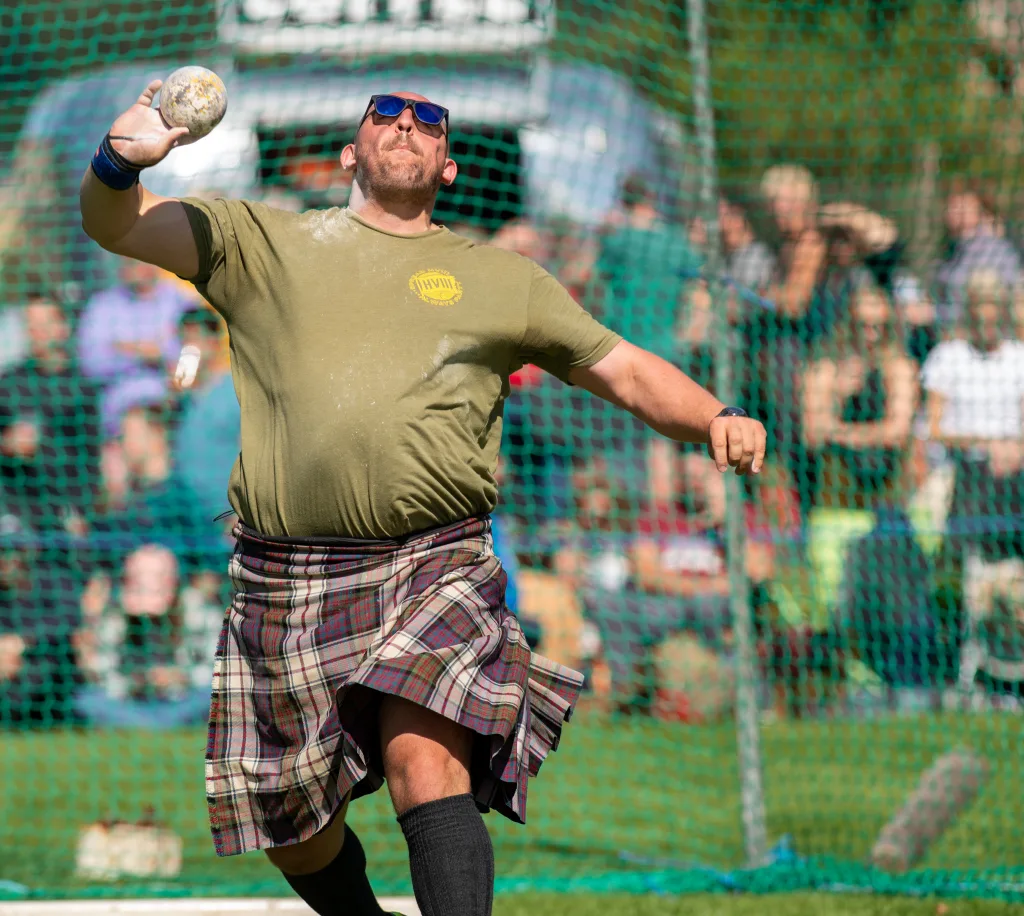
Shot Putt
This was one of the simplest competitions, in that competitors were required to throw large boulders as far as possible.
Needless to say, no two boulders are alike, so some of the success boasted did not quite match up to others.
Nowadays the weight is standardised at 16lbs and 22lbs and a regulation steel ball replaces the rather less predictable stones.


